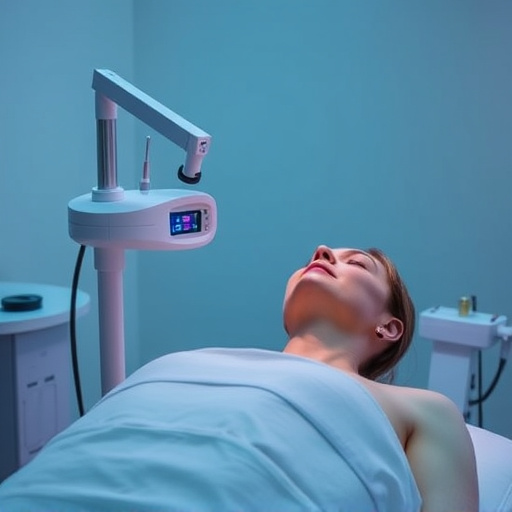Personalized treatment plans are crucial for optimal post-procedure recovery, tailored to individual health profiles and goals. Healthcare professionals create customized strategies for specific needs like skin tightening or brightening, considering unique physiology, lifestyle, and desired outcomes. Continuous monitoring ensures adjustments for safe, effective healing, maximizing patient satisfaction with diverse procedures.
Personalized treatment plans are transforming post-procedure recovery, ensuring optimal patient outcomes. This article delves into the critical components of successful recovery management, focusing on understanding individual patient needs, tailoring recovery strategies accordingly, and continuously monitoring progress for adjustments. By adopting these practices, healthcare providers can enhance healing, reduce complications, and improve patient satisfaction. Discover how customized care approaches revolutionize post-operative care in today’s medical landscape.
- Understanding Individual Patient Needs
- Tailoring Recovery Strategies Effectively
- Monitoring and Adjusting for Optimal Results
Understanding Individual Patient Needs

Every patient’s journey towards recovery after a procedure is unique, shaped by their individual health profiles and goals. Effective post-procedure care requires more than one-size-fits-all approaches; it demands tailored strategies that address specific needs. That’s where personalized treatment plans come into play, serving as a roadmap to optimal healing and results.
By thoroughly assessing each patient, healthcare professionals can pinpoint areas requiring special attention. For instance, some may need targeted treatments for skin tightening or brightening, while others might focus on addressing specific concerns from facial treatments. This individualized approach ensures that every aspect of recovery is addressed in a way that best supports the patient’s unique characteristics and aspirations.
Tailoring Recovery Strategies Effectively

Personalized treatment plans are transformative tools for post-procedure recovery, ensuring optimal results for various aesthetic procedures, including facial treatments, body contouring, and skin rejuvenation. By tailoring recovery strategies to individual needs, healthcare professionals can significantly enhance patient satisfaction and speed up healing processes. This approach involves a deep understanding of each patient’s unique physiology, lifestyle, and specific goals.
Effective personalization starts with comprehensive consultations, where experts gather detailed information about the patient’s medical history, lifestyle choices, and desired outcomes. This knowledge allows for customized recommendations, from post-op care routines to prescribed medications or supplements. For instance, a facial treatment recovery plan might focus on gentle cleansing and hydration for sensitive skin, while body contouring procedures may require more intensive nutrient support and reduced physical activity to manage swelling and bruising.
Monitoring and Adjusting for Optimal Results

Effective personalized treatment plans for post-procedure recovery require continuous monitoring and adjustments to ensure optimal results. This dynamic approach acknowledges that every individual’s healing process is unique, influenced by factors such as age, health status, and lifestyle choices. Healthcare professionals skilled in aesthetic treatments and non-surgical interventions play a pivotal role here. They meticulously track patient progress, evaluating key metrics like pain levels, swelling, and overall recovery trajectory.
Based on these observations, they make informed decisions to tailor professional skincare routines and adjust treatment parameters in real time. This proactive monitoring not only minimizes risks but also maximizes the benefits of procedures, ultimately contributing to superior patient satisfaction.
Personalized treatment plans are the cornerstone of effective post-procedure recovery. By understanding individual patient needs, tailoring recovery strategies accordingly, and continuously monitoring progress with adjustments as needed, healthcare providers can ensure optimal results. This patient-centric approach not only enhances satisfaction but also fosters better outcomes, underscoring the importance of personalized treatment in modern medical practices.














